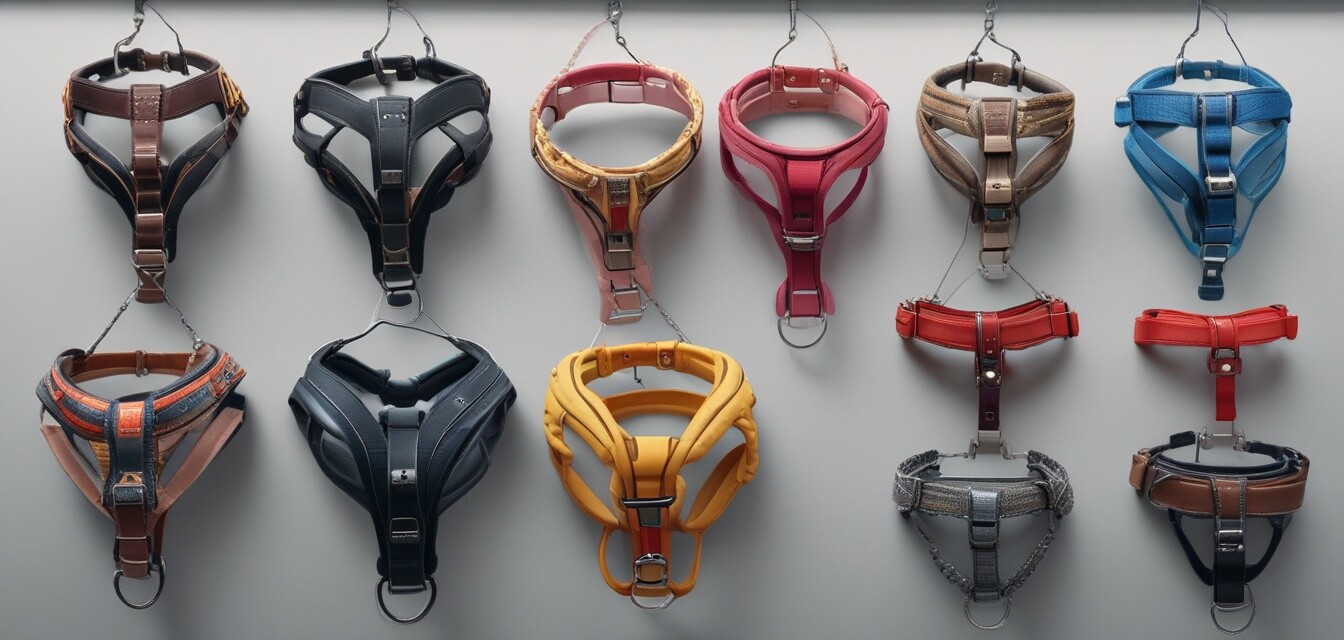
Choosing the Right Harness for Your Dog's Lifestyle
Key Takeaways
- Consider your dog’s size and breed when selecting a harness.
- Choose a harness that suits your dog's activity level.
- Look for comfort features such as padding and adjustability.
- Consider the style and materials to match both functionality and fashion.
- Understand different harness types for various purposes, like walking, training, or safety.
Finding the perfect harness for your dog is essential for ensuring their comfort and safety when you're out and about. With so many options available in the market, it can be overwhelming to choose the right one. This guide will help you navigate through the various types of harnesses, their benefits, and how to select the one that best fits your dog's lifestyle.
Types of Dog Harnesses
| Type of Harness | Best For | Features |
|---|---|---|
| Back-clip Harness | Casual walkers | Easy to put on, good for training. |
| Front-clip Harness | Pulling dogs | Helps discourage pulling, more control. |
| Dual-clip Harness | Versatile needs | Can be clipped in front or back for training. |
| Vest-style Harness | Small dogs or those with respiratory issues | Distributes weight evenly, high comfort. |
| Step-in Harness | Easy to wear | Simply steps in, good for anxious dogs. |
Factors to Consider When Choosing a Harness
When you're shopping for a pet harness, keep the following factors in mind:
- Size: Make sure to measure your dog's girth or neck to find the right fit.
- Material: Choose breathable and durable fabrics that offer comfort and are easy to clean.
- Adjustability: Harnesses with adjustable straps provide a better fit and accommodate growth.
- Style: Consider a harness that matches your dog's personality with fun colors and patterns. Discover popular bandanas, bow ties, and other fashion accessories that complement the harness!
- Padded Areas: Look for harnesses with padding to prevent chafing and enhance comfort.
Matching Harnesses to Lifestyle Needs
Your dog's lifestyle will heavily influence the type of harness you need. Here are suggestions based on common activities:
- Active Dogs: For dogs that enjoy running or hiking, consider a dual-clip harness for both control and comfort.
- Training: A front-clip harness can help with training, especially when discouraging pulling.
- Small Dogs: A vest-style harness can provide better support and is gentle on the body.
- Everyday Walks: A back-clip harness is ideal for regular walks and daily outings.
Care and Maintenance
To ensure the longevity of your dog's harness, follow these simple care tips:
- Regularly check for wear and tear.
- Wash according to the manufacturer's instructions, typically on a gentle cycle.
- Avoid using harsh chemicals that can wear down the materials.
- Store in a dry place to prevent mold and odors.
Conclusion
Choosing the right harness for your dog's lifestyle not only enhances their comfort but also ensures safety during your adventures together. Understanding the different types of harnesses and considering factors like size, material, and style will help you make an informed decision. Don't forget to explore our Buying Guides section for more tips on selecting the best fashion accessories that complement your dog's harness!
Pros
- Broad variety to suit different lifestyles.
- Comfort-enhancing features like padding.
- Encourages positive walking behavior.
- Stylish options can express personality.
Cons
- Finding the right size can be challenging.
- Some styles may not suit all dog breeds.
- Higher quality harnesses can be costly.
Beginner's Section: Tips for First-Time Buyers
- Measure your dog’s girth with a soft tape measure for the best fit.
- Start with a simple harness design to ease them into wearing it.
- Consider your dog’s activity level and purchase accordingly.
- Don’t compromise on quality; a sturdy harness is a good investment.